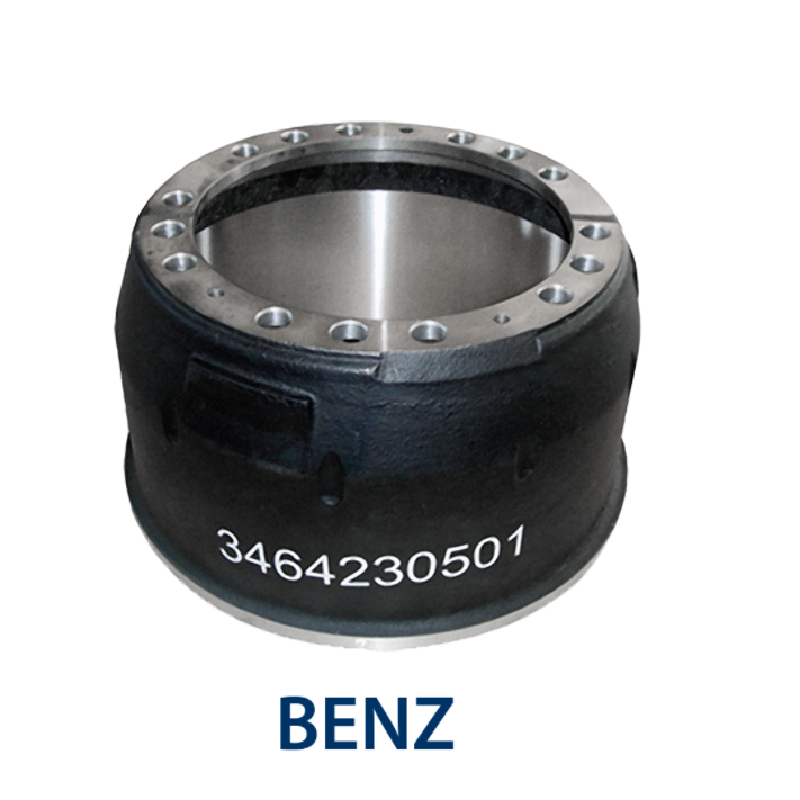Oct . 12, 2024 15:06 Back to list
Comparing Brake Drums and Rotors in Automotive Braking Systems
The Difference Between Brake Drums and Rotors
When it comes to vehicle braking systems, understanding the components involved is essential for both safety and maintenance. Two primary components used in braking systems are brake drums and brake rotors. Although they serve the same purpose of slowing down or stopping a vehicle, they operate differently and have distinct characteristics that make them suitable for specific applications.
Brake Drums
Brake drums are found in drum brake systems, which are commonly used in older vehicles and some modern lighter-duty applications. A brake drum is a cylindrical component that rotates with the wheel. Inside the drum, there are brake shoes that are lined with friction material. When the driver presses the brake pedal, hydraulic fluid activates a mechanism that pushes the brake shoes against the inner surface of the drum. This friction generates the necessary force to slow down or stop the vehicle.
One of the key advantages of brake drums is their ability to provide strong braking force at lower costs. They are generally less expensive to manufacture and replace compared to rotors. Additionally, brake drums can handle heat better, making them less prone to fading under heavy braking conditions, particularly in lighter vehicles.
However, brake drums also have some downsides. They can be prone to overheating, which might lead to brake fade under extreme conditions. Additionally, the maintenance of drum brakes can be more complicated due to their enclosed design, making it harder for mechanics to inspect and service the components. This often leads to a preference for rotor systems in performance-oriented vehicles.
Brake Rotors
difference between brake drums and rotors

Brake rotors are used in disc brake systems, which have become the standard in most modern vehicles, especially those designed for performance and safety. The rotor is a flat, disc-shaped component that sits outside the wheel and rotates with it. When the brake pedal is pressed, brake calipers squeeze brake pads against the rotor’s surface, creating friction that slows down the vehicle.
One significant advantage of brake rotors is their superior cooling capabilities. The open design allows for better airflow, which helps dissipate heat more effectively compared to drum brakes. This feature makes disc brakes less susceptible to brake fade, providing more consistent performance during prolonged braking situations, such as in emergency stops or aggressive driving conditions.
Another benefit of rotors is ease of maintenance. The design allows for easier access to brake components, making it simpler for mechanics to inspect, replace pads, and service the brakes. Additionally, rotors often exhibit fewer problems related to warping and cracking, as long as they are properly maintained and not subjected to excessive overheating.
On the downside, brake rotors can be more expensive to manufacture and replace. They also tend to wear out faster than brake drums, especially if used in heavy-duty applications. Furthermore, they might require more frequent maintenance due to the nature of the materials used in brake pads.
Conclusion
In summary, both brake drums and brake rotors serve the crucial function of enabling vehicles to stop effectively, but they do so in different ways. Brake drums are typically less expensive and offer good performance for lighter applications, while brake rotors provide superior cooling and ease of maintenance, making them the preferred choice for most modern vehicles. Understanding the differences between these two braking systems can help vehicle owners make informed decisions regarding repairs, upgrades, and the overall safety of their vehicles. Whether opting for one system over the other, keeping regular maintenance in check is key to ensuring optimal braking performance and safety on the road.
-
Explore Japan: Ultimate Travel Guide & Authentic Experiences
NewsAug.19,2025
-
Your Brake Drum Man: Premium & Reliable Brake Drums for Sale
NewsAug.18,2025
-
ROR Web Development: Build Fast, Scalable, Secure Apps
NewsAug.17,2025
-
Scania Brake Drums: OEM Quality for Optimal Safety & Durability
NewsAug.16,2025
-
R.V.I: Advanced Remote Visual Inspection for Precision
NewsAug.15,2025
-
Discover HYUNDA: Innovative Vehicles, Equipment & Solutions
NewsAug.14,2025
